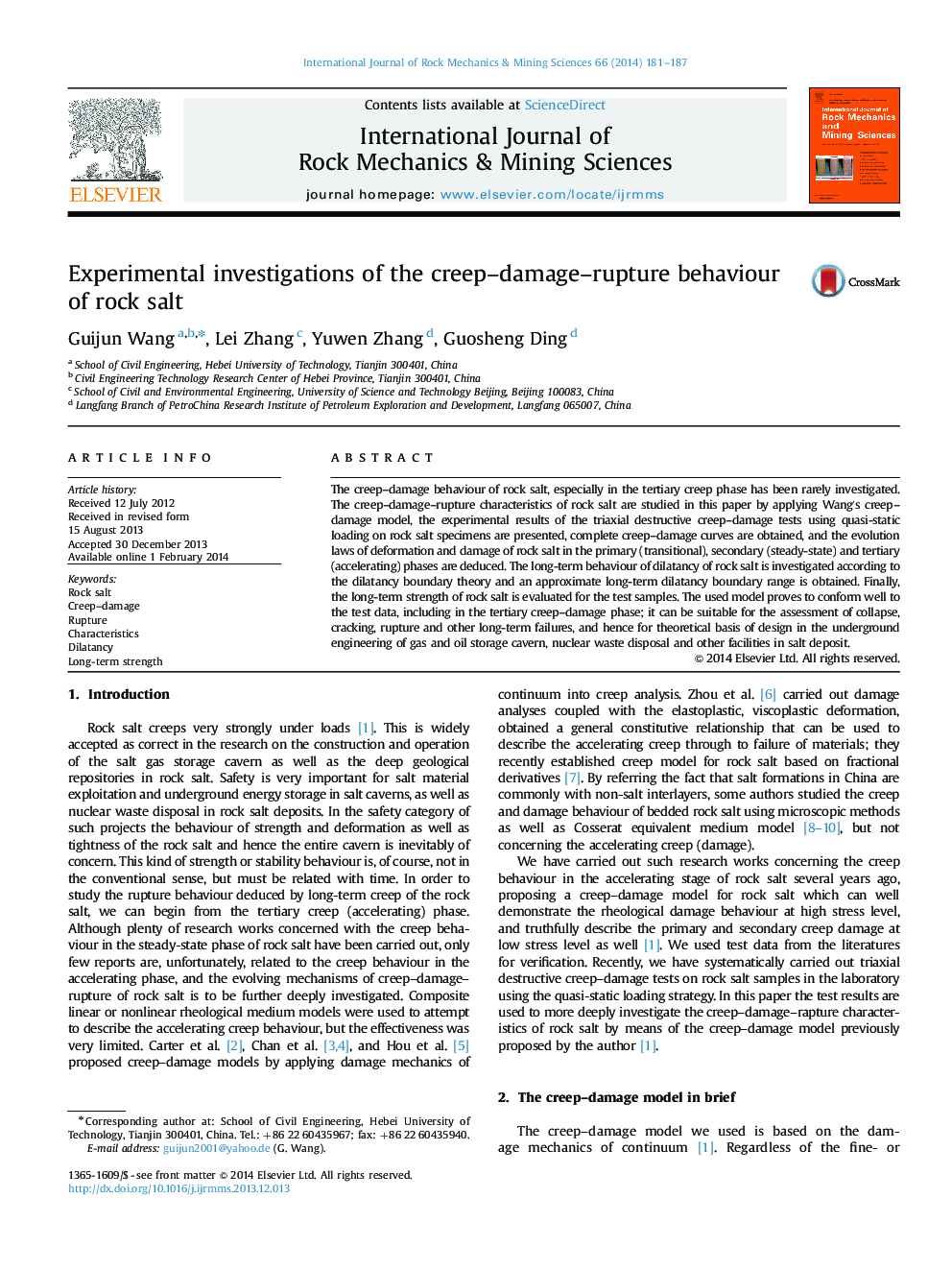| Article ID | Journal | Published Year | Pages | File Type |
|---|---|---|---|---|
| 809366 | International Journal of Rock Mechanics and Mining Sciences | 2014 | 7 Pages |
•The creep–damage model can well describe the creep–damage–rupture behaviour of rock salt.•The model results are also well conformed to the test data in the tertiary creep–damage phase.•The strength hardening can occur due to long-term confining pressure of the rock salt specimen.
The creep–damage behaviour of rock salt, especially in the tertiary creep phase has been rarely investigated. The creep–damage–rupture characteristics of rock salt are studied in this paper by applying Wang's creep–damage model, the experimental results of the triaxial destructive creep–damage tests using quasi-static loading on rock salt specimens are presented, complete creep–damage curves are obtained, and the evolution laws of deformation and damage of rock salt in the primary (transitional), secondary (steady-state) and tertiary (accelerating) phases are deduced. The long-term behaviour of dilatancy of rock salt is investigated according to the dilatancy boundary theory and an approximate long-term dilatancy boundary range is obtained. Finally, the long-term strength of rock salt is evaluated for the test samples. The used model proves to conform well to the test data, including in the tertiary creep–damage phase; it can be suitable for the assessment of collapse, cracking, rupture and other long-term failures, and hence for theoretical basis of design in the underground engineering of gas and oil storage cavern, nuclear waste disposal and other facilities in salt deposit.
Graphical abstractBased upon the creep–damage model and the experimental results, the creep–damage–rupture characteristics of salt rock are investigated. Complete creep–damage curves are obtained (see Fig. 1), the evolution laws of deformation and damage of rock salt in the primary, secondary and tertiary phases are deduced. Moreover, the long-term behaviour of dilatancy and strength of rock salt are investigated. These results may by very useful for the assessment of long-term collapse, cracking, rupture and other failures of rock salt.Figure optionsDownload full-size imageDownload as PowerPoint slide
